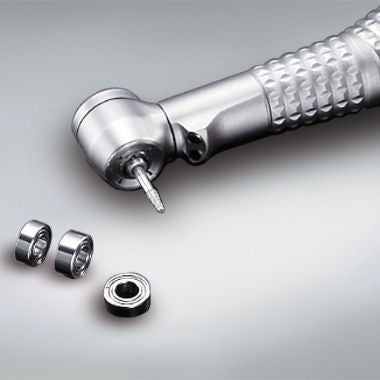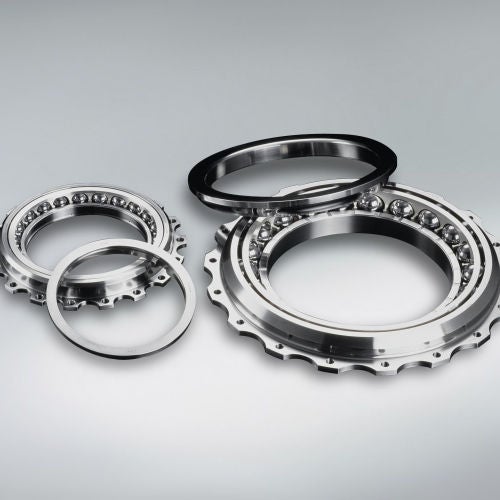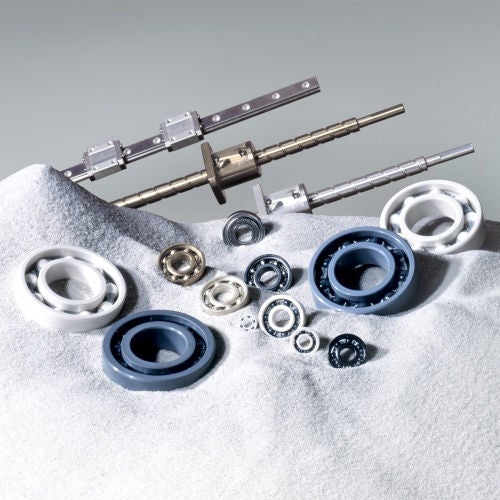Innovative Bearings
Bearings are used in a wide range of machines, both industrial and in everyday household equipment.
Special applications have very demanding conditions which require bearings to deliver expectional capabilities.

Outside Diameter of 2 Millimetres
Miniature bearings have an outside diameter as small as 2 mm, bore size of just 0.6 mm and a width of 0.8 mm. Miniature bearings are used in applications including small electric motors.
At the other end of the spectrum, there are large bore bearings with an outside diameter up to 6 meters that weigh more than 15 tons and are used in applicaitons including large tunnel boring machines.

400,000 Revolutions per Minute
Bearings can operate under very high speeds, common in applications such as dental drills. These drills use tiny high-precision ball bearings spinning up to 400,000 revolutions per minute.
These extremely high speeds together with absolute precision virtually eliminate vibrations in dental drills. In addition to being a fascinating aspect from a technical perspective, it should also be a relief to patients, who can rest assured that they will receive safe and quiet treatment.

Bearings Enable Flight Speeds of 360 mph
These special bearings are used in the main shaft of passenger aircraft engines. The revolving parts rotate at a speed of 160 meters per second – equivalent to 360 mph. This means that bearings also help to keep you safe in the skies.

Vibrations of Less than 100 Nanometres
A machine’s precision rests on the accuracy of its bearings. Each end of a rotational axis is supported by a bearing. The machine then operates precisely, even if there is a long run-out from the center of the axis or it is running at high speed. For example, high-precision bearings with minimal vibrations of less than 100 nanometers* are used for computer drives.
(*1 nanometer is a thousand millionth of a meter).

Revolving in Space for 15 Years
Bearings play a critical role in space flight too. Information such as weather and GPS data is radioed to Earth via satellites. The satellites’ design features a reaction wheel, which keeps them in position and aims them in the right direction. High-precision bearings have been in use in these reaction wheels for over 15 years.

From −253 °C/−423 °F to +500 °C/ 932 °F
Bearings also operate reliably at temperatures well below zero – for example in space rockets’ fuel pumps, where they operate in liquid oxygen at temperatures of −253 °C/ -423°F
High-precision bearings are also able to take extreme heat, operating in computer tomographs at temperatures of +300-500 °C / +572-932°F and in vacuum tubes with X-rays. By doing so, they help health care professionals provide modern day comprehensive check-ups.
Share